Battle Of Evermore Led Zeppelin
Battle of Evermore Led Zeppelin
Patlabor 2
Set in 2002, three years after the events of the first movie, Noa Izumi and Asuma Shinohara are now testing new Labors at a facility run by the Metropolitan Police. Isao Ota is a police academy Labor instructor. Mikiyasu Shinshi has since been reassigned as the Tokyo Metropolitan Police's head of General Affairs. Seitaro Sakaki has retired with Shigeo Shiba taking over his position as head of the labor maintenance team with Hiromi Yamazaki, Kiichi Goto and Shinobu Nagumo remaining with the unit as Kanuka Clancy had permanently returned to New York. Most of them had been replaced by fresh labor pilots.
Suspicious events begin to materialize with the face of a military takeover of Tokyo by GSDF forces and martial law after the Yokohama Bay Bridge is destroyed by a missile, with belief that the JASDF was the culprit. Protests in various JSDF bases take place as a means of conveying their denial of the bridge attack. Before long, public panic comes as JGSDF-marked gunships attack in several bridges in Tokyo Bay, various communication centers and SV2 headquarters, coupled by the release of a supposed deadly gas after Special Assault Team snipers shoot down an auto-piloted blimp that was responsible for jamming all electronics in the Greater Tokyo Area.
This is the only song Zeppelin ever recorded with a guest vocalist. Robert Plant felt he needed another voice to tell the story that plays out in the song, so Sandy Denny from Fairport Convention was brought in. Her vocals represent the people as the town crier, while Plant's voice is the narrator. Fairport Convention was a British folk group Zeppelin shared a bill with in 1970.
This collaboration with Sandy Denny marked the first time Robert Plant did a duet with a woman. In later years, he had tremendous success singing with Alison Krauss; their 2007 album Raising Sand won a Grammy award for Album of the Year.
Sandy Denny was given a symbol on the album sleeve - three pyramids - to thank her. The four members of Led Zeppelin each designed their own symbols for the album. Denny died in 1978 from a brain hemorrhage resulting from a fall down the stairs.
Jimmy Page wrote the music on a mandolin he borrowed from John Paul Jones. He explained to Guitar Player magazine in 1977: "On 'The Battle of Evermore,' a mandolin was lying around. It wasn't mine, it was Jonesey's. I just picked it up, got the chords, and it sort of started happening. I did it more or less straight off. But, you see, that's fingerpicking again, going back to the studio days and developing a certain amount of technique – at least enough to be adapted and used. My fingerpicking is a sort of cross between Pete Seeger, Earl Scruggs, and total incompetence."
Led Zeppelin rarely played this live, but when they did, John Paul Jones sang Sandy Denny's part.
Many J.R.R. Tolkien fans see the lyrics as a reference to his book Return Of The King, where the lyrics could describe the Battle of Pelennor ("The drums will shake the castle wall, The ring wraiths ride in black"). Plant is a huge Tolkien fan, and referred to his books in "Ramble On" and "Misty Mountain Hop."
A lot of this fits the battle of the Pelennor fields: "At last the sun is shining, The clouds of blue roll by" - as Sauron's army and influence advanced the sky darkened and when he lost this battle it became light again. But a lot doesn't fit to that particular battle/book, including the part about the angels of Avalon, as Avalon was not from Tolkien's world but the legends of Merlin and King Arthur. The song is not completely about that battle but there are references to Lord Of The Rings things like Ringwraiths and most of the song can be interpreted to be about it if you choose.
The word "Avalon" is Latin for "place with apples," and here is the part of the song Avalon is mentioned - "I'm waiting for the angels of Avalon, waiting for the eastern glow. The apples of the valley hold the seeds of happiness," so it may just mean "I'm waiting for the angels of place with apples."
Sound engineer Andy Johns said of the recording: "The band was sitting next to the chimney in Headley, drinking tea, when Jimmy grabbed a mandolin and started playing. I gave him a microphone and stuck a Gibson echo on his mandolin. Jimmy had brought this stuff before and had asked me to take a look at it. Suddenly Robert started singing and this amazing track was born from nowhere."
The 1992 Singles soundtrack includes a live cover of "The Battle Of Evermore" by the Lovemongers, a side project of Ann and Nancy Wilson of Heart along with songwriters Sue Ennis and Frank Cox.
-
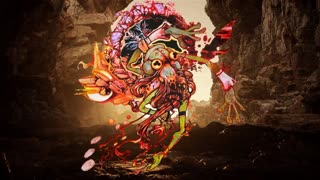 10:31
10:31
Psychological operations
4 months agoAchilles Last Stand Led Zeppelin
4364 -
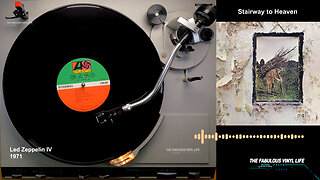 44:41
44:41
The Fabulous Vinyl Life
5 months agoLed Zeppelin IV 1971
4812 -
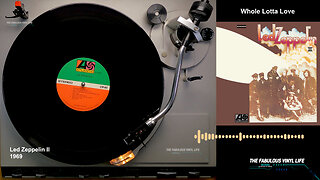 43:52
43:52
The Fabulous Vinyl Life
5 months agoLed Zeppelin II 1969
5642 -
 3:57
3:57
Joey McNew
3 years agoLed Zeppelin – Houses Of The Holy - Drums Only
193 -
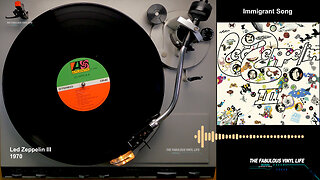 45:29
45:29
The Fabulous Vinyl Life
5 months agoLed Zeppelin III 1970
5092 -
![Stairway to Heaven Guitar Solo Lesson [Led Zeppelin Riffs]](https://hugh.cdn.rumble.cloud/s/s8/1/d/m/F/5/dmF5b.0kob.6-small-Stairway-to-Heaven-Guitar-S.jpg) 26:16
26:16
PaluzziGuitar
2 years agoStairway to Heaven Guitar Solo Lesson [Led Zeppelin Riffs]
525 -
 6:58
6:58
HuskeyDrums
1 year ago02 — Led Zeppelin — Since I've Been Loving You (BBC Sessions — Live) — Drum Cover by HuskeyDrums
1183 -
 4:41
4:41
Rob Redhead Archives
4 months agoRed Zeppelin - The Battle of Evermore
239 -
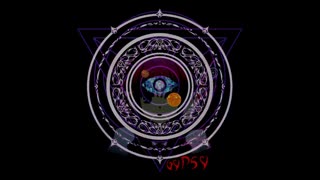 7:22
7:22
TuneQuest
7 months agoLed Zeppelin | Ten Years Gone Live ( Knebworth 1979 )
16 -
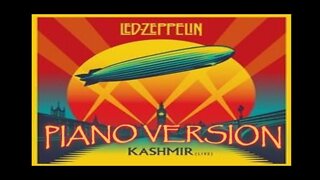 8:24
8:24
Piano Version
2 years ago $0.01 earnedPiano Version - Kashmir (Led Zeppelin)
245